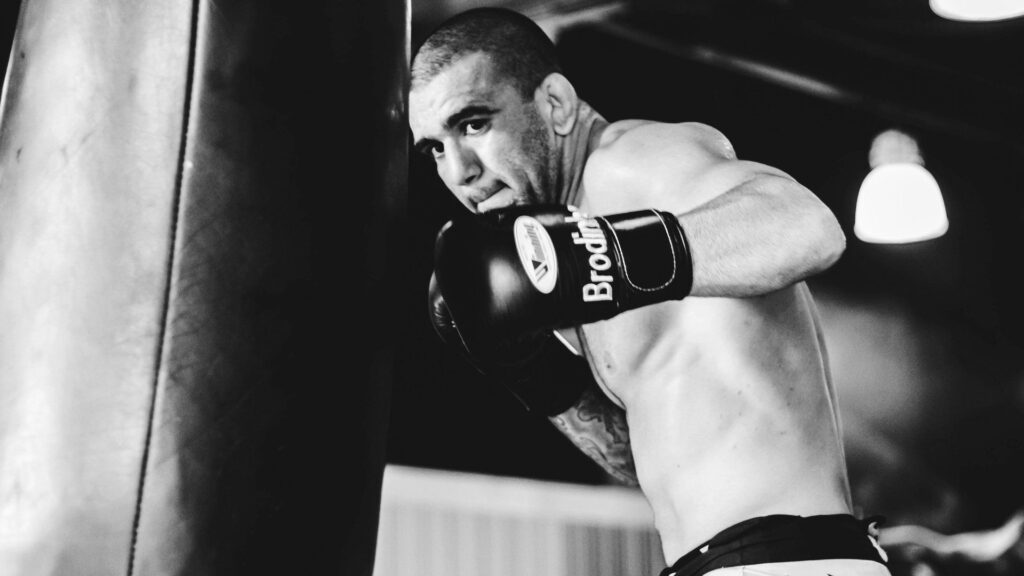It is often a very hot topic of debate, but many aficionados have cited the hook as the single most destructive punch in boxing.
The science behind it is simple. The hook travels the shortest distance from launch to target, transferring power generated from the base to the torso, and eventually to the fist. Although it is easy to execute, it is incredibly difficult to master and takes years of practice to fully utilize.
Some of boxing’s greatest knockout artists in history have employed the most vicious hooks you’ll ever find. From “Iron” Mike Tyson’s devastating hooks to the body, to Roy Jones Jr.’s triple and quadruple hooks, the variations are numerous. For beginners, we have listed a few great additions to your repertoire.
There’s an old adage in boxing that warns never to hook with a hooker. With these awesome techniques, you’ll be on your way to proving that to be absolutely true.
Today, Evolve Daily shares five different kinds of hooks you can add to your boxing arsenal.
1) The Textbook Hook
It’s a classic. But although it can be very simple, it can also be one of the most effective punches to use in almost any situation.
Before you learn any of its variations, it’s important to master the essentials of the textbook hook. Start by launching your fist towards the target, keeping your elbow parallel to your cheekbone. Pay attention to your form and make sure you aren’t throwing the hook wide. Keep it nice and compact, and don’t forget to pivot to shift your weight and momentum correctly. Ensure that you are connecting with only your two largest knuckles.
The textbook hook is a thing of beauty when executed correctly, so practice until you get the form right, then look to add power and speed.
2) The Lead Hook
Although the hook usually comes at the end of a combination, many of the sport’s best fighters have used the hook as a lead punch. When utilized as the first punch in a combination, the hook can catch an opponent off guard.
When throwing a lead hook, it is important not to cock your fist back before throwing. Loading up on your hook like this only decreases its effectivity because the punch is telegraphed. The element of surprise is maintained when the opponent doesn’t expect the lead hook.
Focus on head movement and speed. Constant head movement makes it difficult to telegraph a lead hook because opponents have no indication when it’s coming. Speed, on the other hand, reduces an opponent’s reaction time. Step into the lead hook to add more oomph.
The lead hook often lands with great accuracy due to its unpredictable nature. Subsequently, lead hooks can be followed by more power punches such as the rear straight or the rear uppercut.
3) The Check Hook
Also known as the step-back hook, the check hook is used as a counter to a forward-moving opponent.
Oftentimes, aggressive forward-moving opponents can be hard to deal with. When met with such a foe, it is very easy to revert to a defensive shell and retreat to the ropes where you are susceptible to being cornered. The check hook is an effective way to counter this situation.
The secret to the check hook lies in the footwork. The faster and more explosive your step back is, the more potent the check hook becomes.
Practice your step back repeatedly until you are comfortable with the movement and can dart in and out of range in an instant. It is imperative that you remain light on the feet when performing your step back, as well as pay attention to where your weight is shifting.
Setup your step back so that the weight ends up on your lead leg, then use that leg to push off and execute a textbook hook as your opponent is coming in. If you’ve timed it correctly, your check hook should land with unbelievable force.
4) The Double Hook
A Roy Jones Jr. favorite – the double hook is an awesome way to pepper your opponent with power punches.
Doubling up on the hook, however, is terribly difficult and requires immense shoulder strength. It is recommended that you first master the textbook and lead hook before attempting the double hook.
Furthermore, the double hook needs to be thrown with incredible speed and authority to maximize its effectiveness.
You can also mix it up and throw both the body and head hooks in a double hook sequence. The most important thing to take note of in a double hook combination is to make sure you aren’t leaving yourself open to being countered with a cross. Focus on landing your hooks, but don’t neglect your defense.
When you are more comfortable in launching successive hooks, you can then triple or quadruple the output to force your opponent even more onto the defensive.
5) The Shovel Hook
Last, but certainly not the least, the shovel hook is used to increase the chances of this power punch landing due to its unorthodox angle. The shovel hook is effectively a cross between a regular hook and an uppercut. As such, it is thrown at a somewhat 45-degree angle.
When defensive boxers enter a turtle shell defensive stance, it is very difficult to penetrate. The only way to break through that guard and get through is if you offer your opponent different looks. One way to do this is by punching at angles. The shovel hook gives you the ability to circumvent your opponent’s defense by attacking from an unorthodox position.
Thrown lower than a normal hook, the shovel hook aims at connecting on an opponent’s jaw as opposed to a regular hook which is aimed at the temple.
Once again, speed and head movement are the two essential ingredients to a great shovel hook. The faster and more explosive the hook, the more damage it will do when it lands.
Usually set up with an initial combination, the shovel hook can land with immense force, and because your opponent isn’t used to dealing with this rare punch, he won’t see the shovel hook coming nor would he know how to defend against it.
Try these hook variations the next time you’re in the boxing gym. Practice until you get the form and technique perfect, then gradually add speed and power. You’ll be hooking like an expert in no time!
You may also like:
















